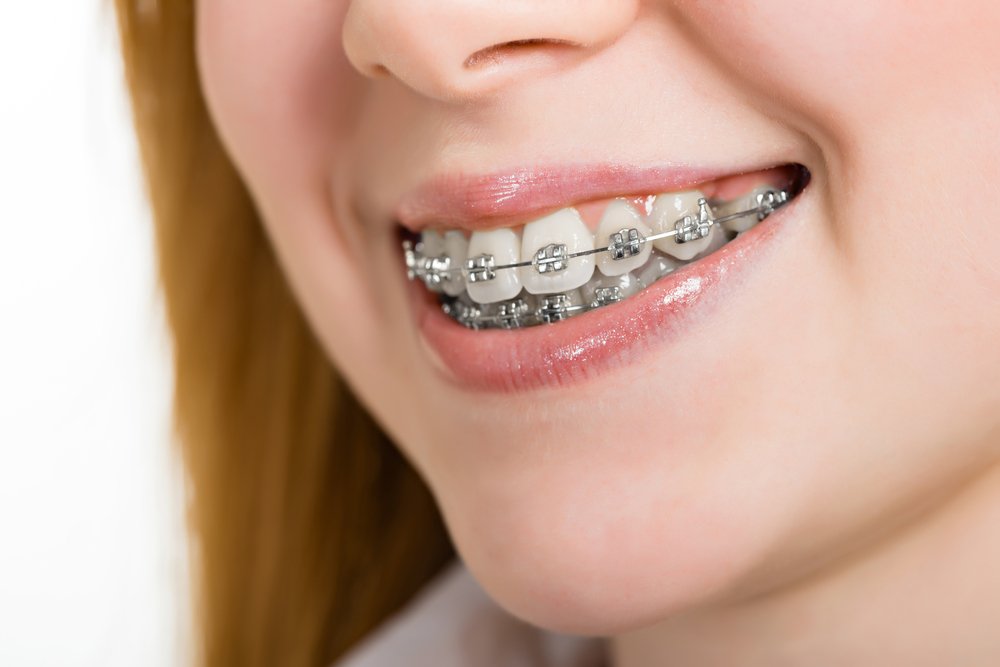Mini implants have made a big shift in orthodontics. Why? Physics and its laws have a very important place in orthodontics. Newton’s third law, ie the law of action and reaction, says that if one body acts by force on another, then the other body also acts by force on the first. In orthodontics, it looks like this: if we want to move one tooth towards the other, then the second tooth will also move towards the first.
It is not always in our interest to move that other tooth. In an effort to resist the reaction force, orthodontists sought to connect multiple teeth into a block to prevent unwanted tooth movement. Sometimes connecting the teeth in a block is enough, and sometimes it is not, and the method of blocks cannot predict the movement of the teeth to the desired location, then dental implants and braces are combined. The consequences can be catastrophic and irreparable.
With the advancement of technology in orthodontics, mini implants began to be used which is revolutionary. We can now move the tooth to the desired position without affecting the other teeth. With the use of mini implants, the possibilities of the orthodontist to move the teeth are expanded and the way is opened for greater success in work.
Mini implants have been used regularly in orthodontics for over 15 years. Numerous studies are available and their value and effectiveness have been proven, and new ways of their application are being discovered every day.
Mini implants are also called temporary anchorage devices (TAD) because we use them for anchoring for a certain time, and then we take them out.
We use mini implants from the German company PSM Medical, which are one of the most expensive implants with the most confirmed research.
WHERE DO WE MOSTLY INSTALL MINI IMPLANTS?
1. Mini implants are most often placed in the palate because many studies have shown that we have the most suitable structure and amount of bone on the palate for positioning implants. It doesn’t matter when moving the tooth. We place implants in the palate when:
- we install a hybrid hyrax device for expanding the palate
- for anchors when extracting teeth – when we do not want the sixes to move forward
- when we want to move only sixes forward (distalization and mesialization)
- when we want to move the middle of the dental arch as well
- a number of other applications that depend on the orthodontist’s imagination to construct the system for the desired displacement and the ability of the technician to perform the construction.
Mini implants are placed in the lower jaw between the triple and quadruple:
- if we want to move the front teeth down or forward without the rear teeth moving
- if we want to move the six forward
- if we want to straighten some inclined tooth.
The outer part of the upper jaw – when we want to intrude, ie pull the sixes and weeks up.
The back of the upper jaw behind the dental arch – tuber. After removing the eights (wisdom teeth) in the same procedure, we place a mini implant that serves to move the sixes and weeks, and then the entire dental arch backwards and for intrusion (moving the posterior teeth upwards). On the braces and the implant rubber bands are placed. The purpose of rubber band on braces and implants is to produce a force that moves the teeth. With this procedure, we often avoid removing the premolars when we lack space.
HOW ARE MINI IMPLANTS PLACED?
The procedure of placing mini implants is very simple, fast and painless.
First, the area in which we want to place the implant is anesthetized, then a small hole is made with a special drill and the implant is twisted, as when the nail is screwed into the wall. No stitches, no bleeding and no pain.
When we put the implant in the palate, we put a cap on the implant and take an impression. The technician then constructs a device on the model that is placed on the mini implants in the mouth at the next inspection.
If the mini implants are placed in the lower jaw, there is no need for an impression, but force is applied to them immediately.
After placing the mini-implant, during the day, we recommend that the patient consume cold food and drinks and take pain medication, as needed.
In order for the implants to be placed perfectly in the palate, we use special transmission systems called Guided implantology system. They are made with digital technology based on a scanned patient model and CBCT images that are connected in special software. In this way, we have the opportunity to place the implants in the place of the most suitable bone without the risk of possible damage to the surrounding structures. Accuracy is maximum and rejection is reduced.
Mini implants require a lot of imagination and improvisation.
Related posts
Subscribe Now
* You will receive the latest news and updates on your favorite celebrities!
Meet the Author

Gillion is a multi-concept WordPress theme that lets you create blog, magazine, news, review websites. With clean and functional design and lots of useful features theme will deliver amazing user experience to your clients and readers.
Learn moreHOT TOPICS
Categories
- Animals (6)
- Business (579)
- Cooking (3)
- Design (17)
- Education (59)
- Entertainment (62)
- FASHION (89)
- Fashion (39)
- Featured (19)
- FOOD (42)
- Guide (55)
- Health (290)
- HOME (184)
- Interior (14)
- Life (8)
- Lifestyle (111)
- Motivation (6)
- News (47)
- People (4)
- Photography (5)
- Review (4)
- Style (4)
- TECH (176)
- Travel (107)
- Uncategorized (1,328)



Stay connected